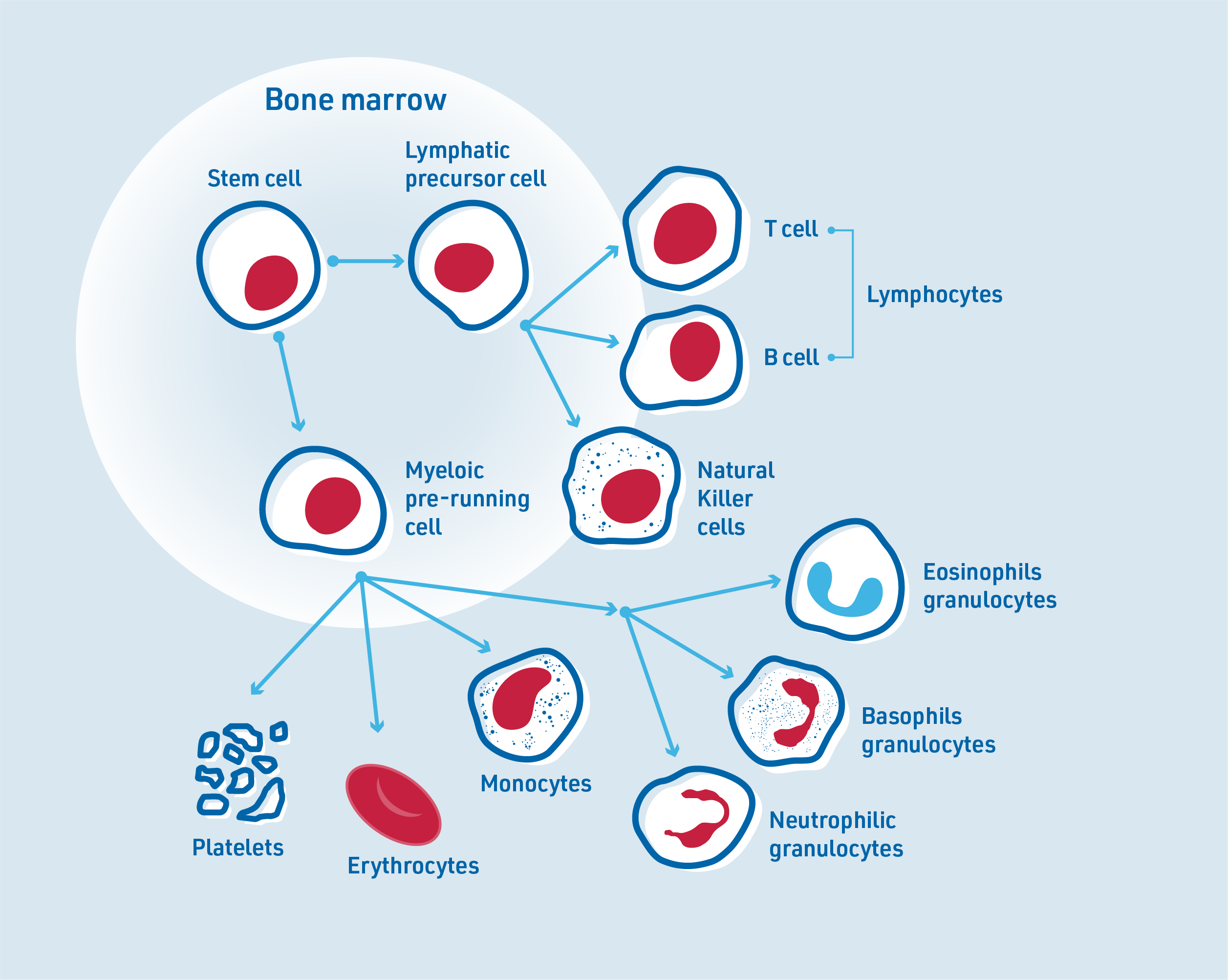
Stem cell transplant (SCT for short) is the transfer of blood stem cells from a donor or yourself to a recipient.1
In a stem cell transplant, the aim is to first destroy all diseased cells with chemotherapy and then replace the stem cells that have been killed with blood stem cells.1
Blood stem cells are suitable for this because they are immature cells that can mature into different types of blood cells and are responsible for blood formation. Blood stem cells are found in both the bone marrow and also in the bloodstream.1

Ebdon C et al. Surgery (Oxford). 2013;31:200–205.
Blood stem cells are usually collected from the bloodstream through a process called apheresis. During this process, blood is drawn from the donor (yourself=autologous stem cell transplant, donor=allogenic stem cell transplant), the stem cells are separated from the blood using a special machine. The rest of the blood is returned to the body’s circulation.3
Before the healthy stem cells are transplanted into the patient, they will receive high-dose chemotherapy, which will kill almost all of the blood-forming cells, including diseased cells. By infusing the donor stem cells, the patient’s bone marrow is then populated with new, healthy stem cells which can form new healthy blood cells.4,5
The goal of a stem cell transplant is to eliminate cancer cells and achieve long-term disease control.1
In a stem cell transplant, the donor and recipient are either the same person (autologous stem cell transplant) or the cells come from an unrelated matched donor or family member (allogeneic stem cell transplant).1
References: